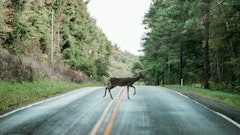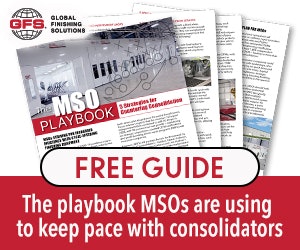
By Jeff Sanford
Toronto, Ontario — March 17, 2017 — The Autonomous Report keeps you up-to-date on all the news involving autonomous vehicles (AVs). This week we look into the upcoming acquisition of Mobileye, why PPG is developing special paint specifically for AVs, how it might be possible to hack an AV with “malicious sound frequencies” and much, much more!
– The big news in the AV sector this week is the “bombshell” announcement that microchip maker Intel will spend $15 billion to acquire Israel-based Mobileye, the “…world’s leader of computer vision chips and algorithms for advanced driver assistance systems and autonomous driving.” Analysts are calling the deal “the biggest deal in the ‘autonomous’ space thus far.” Intel, it is said, has bought its way to the middle of the AV market. According to a report, “When it comes to [AV] vision, ‘Mobileye is as good as it gets’.”
Under the terms of the deal Intel’s Automated Driving Group (ADG) will be integrated into Mobileye (rather than the other way around). Intel executives overseeing ADG will report to the CEO of Mobileye. The company is said to, “… command a near monopoly in the ADAS [Advanced Drive Assist System] computer vision chip market.” It was thought a reorganization of Mobileye to fit into the Intel world would slow the company down, just at the point the company needs to charge ahead. Said an analyst, “I think Intel believes Mobileye’s team is further along in the development, not only vision but other technologies like behaviour (Driving Policy) and localisation (REM). Perhaps centring the actions around Mobileye’s team is the right thing to do.”
The report went on to say that, “Intel and Mobileye are no strangers to each other. The companies have worked together closely for more than a year through the BMW/Intel/Mobileye platform and Delphi project.” In those projects, “Mobileye is responsible for vision processing, running its camera algorithms and fusing data from multiple cameras.” As well, “Mobileye has become an undisputed leader in the ADAS computer vision chip market, offering OEMs and tier ones a ‘black box’ in which Mobileye hardware combines with the company’s own dataset and algorithms.” Intel, on the other hand, is said to aspire, “… to lead in all three facets of the highly automated vehicle platform, from in-vehicle computing to connectivity and data centre. Intel, in short, is setting its sights on an ‘end-to-end’ play in the auto industry.”
– Mobileye’s biggest competitor is Nvidia. Some analysts wonder what the company will do now that Intel has snapped up Mobileye. Not to be left out of the news cycle this week, Nvidia announced it will work with, “… automotive supplier Bosch to mass-produce self-driving car systems …” Bosch, of course, already provides all sorts of in-car systems. It has also started supplying sensors and automotive parts to Tesla’s cars with self-driving technology. The two will use a new chip Nvidia has designed in a computer that Bosch will build.
– A story in Car and Driver magazine discusses the intent by PPG to begin developing new types of paints that will be necessary for AVs. It turns out that the darker colours like black and grey (the most popular colours for cars) absorb, “… more infrared light than lighter colors, which poses a specific and debilitating problem for laser-based object sensors: They can’t see them as well. When firing lidar in the near-infrared spectrum (700 to 1100 nanometers) used by automotive sensors, black cars reduced the reflected signals by half versus a comparable white car, according to PPG.”
The company plans on coming up with paints that will overcome these issues while maintaining those popular shades. Another challenge: “Plastic and composite parts, such as bumpers, also don’t reflect radar as well as steel and aluminum … for car-mounted radar and lidar sensors scanning the road, it has more potential to hide in traffic. Metallic paints are a problem, too. Since they block ultrasonic waves (such as those used for parking or Tesla’s Autopilot), automakers can’t use bumpers with metal flakes. Even radar sensors mounted in bumpers (for example, those used for blind-spot monitoring) may have some of their signals blocked by the paint substrates.”
The article goes on to state that, “Within two years, PPG expects to market improved pigments and resins that will absorb less infrared light … The company also wants to deploy these paints for your local Department of Transportation, so that standing structures such as bridges can be clearly identified and precisely measured by a car’s sensors.”
According to a company source quoted in the story, “We have to put functionality into the paint…What can we do with our coatings to promote better response?” One possible solution to these challenges is to, “… apply hydrophilic and hydrophobic coatings on sensor covers and camera lenses. On glass, both prevent the buildup of dirt (‘-philic’ is the opposite of ‘-phobic,’ so that liquid and dirt form a thin sheet on the surface instead of beading). PPG uses hydrophilic coatings made from titanium dioxide on home windows … hydrophobic coatings, seen on mobile phones and tablets for many years, are the ‘leading contender’ for cars. Later still, PPG will apply hydrophobic coatings to the paint itself … once it can prove long-term durability.”
– The UK House of Lords has just published a major report on AVs. You can find it at publications.parliament.uk/pa/ld201617/ldselect/ldsctech/115/11502.htm.
– Futurist Amy Webb posted on Twitter this week noting that the salt lines laid on a road in preparation for a coming snow storm were screwing up her Tesla’s Autopilot. No human driver would find these at all confusing.
 |
|
| Confusing? Not if you’re a human being, but Amy Webb’s Tesla Autopilot had some trouble with these. |
– University of Michigan scientists discuss the potential that someone could take control of an autonomous vehicle by, “… playing a piece of music embedded with malicious sound frequencies.” According to a report, “Researchers at the University of Michigan have provided compelling evidence highlighting how a variety of technologies including smartphones, fitness wearables and automobiles can be hacked using specific acoustic tones … A University of Michigan team discovered that by deploying precisely tuned acoustic tones, these accelerometers could be fooled into registering false movement readings. These false readings could be so precisely calibrated that they enabled the researchers to take control of some of these devices.”
According to a source in the story, “The fundamental physics of the hardware allowed us to trick sensors into delivering a false reality to the microprocessor.” A study performed by the team, “… demonstrated several ways devices could be exploited and controlled through acoustic waves. On the more innocuous end of the spectrum, they played acoustic tones out of a cheap speaker causing a Fitbit to register thousands of fictitious steps … The more interesting, and potentially dangerous, display of the security exploit came when the team took control of an RC car by attacking the smartphone that was directing it. They took an Android phone that was using an application that directed the RC car based on the phone’s orientation, which was measured by the phone’s MEMS accelerometer. They then created a music file that could spoof the accelerometer into sending false data to the RC car directing it to move forwards and backwards … Even more startling was the fact that they had the malicious audio file play from the same audio device that was controlling the RC car. This illustrates how a device could essentially hack itself simply through audio waves disrupting internal sensors.”
While this is a long way from offering a practical way that autonomous cars could be hacked by someone simply standing on the street with a boombox, the researchers do warn of the dangers in having software rely on data fed from sensors that could easily be manipulated. According to one of the scientists involved in the study, “Thousands of everyday devices already contain tiny MEMS accelerometers … Tomorrow’s devices will aggressively rely on sensors to make automated decisions with kinetic consequences.”
– An interview with Ford’s Chief Engineer for Driverless Cars, Jackie DiMarco, lists the three big issues holding back AVs. The first issue is, “Getting people to trust self-driving cars.” According to DiMarco, “When you talk to people, some are super excited and want to jump into their first AV [autonomous vehicle] today and some are not as excited and not as trusting yet.”
The second issue is cost: “Until prices for self-driving tech begin to fall, it will be difficult for the vehicles to really go mainstream … For example, lidar is a key component of self-driving cars that also happens to be the most expensive … A single, top-of-the-line unit cost $75,000 just two years ago. Prices are already starting to fall—Waymo claims it slashed the price of its Lidar system by 90 percent to around $7,500 per sensor.” Nevertheless, DiMarco said. “…we are still ways off from component prices falling to where they need to be … We have research grade equipment that’s in our vehicles and we need to get off of research grade and into automotive grade.”
DiMarco says the biggest hurdle currently facing the auto industry is the regulatory environment. As it is, “US Transportation Secretary Elaine Chao is currently reviewing the guidelines that were released under the Obama administration after receiving pushback from automakers.” Without federal guidelines, individual states are coming up with their own rules, creating a patchwork of regulations across the country. “The federal regulations are important because we don’t want to adopt different solutions state-by-state,” DiMarco was quoted as saying. “It makes it harder for us to deliver a product if every state has unique regulations. We definitely want a federal roll-out,” according to the report.
– It was only last year when GM bought up AV company Cruise. This week a story appeared quoting the head of Cruise who said GM is going to deploy a fleet of rideshare AVs “very quickly.” A report from Reuters this week suggests that “thousands” of self-driving Chevrolet Bolt hatchbacks will go into service … in 2018 …” GM also bought up ride sharing company Lyft last year, which would be involved in the project.























